Birds (Aves), are a group of endothermic vertebrates, characterised by feathers, toothless beaked jaws, the laying of hard-shelled eggs, a high metabolic rate, a four-chambered heart, and a lightweight but strong skeleton. Birds live worldwide and range in size from the 5 cm (2 in) bee hummingbird to the 2.75 m (9 ft) ostrich. Below mentioned are some of the birds with beautiful beaks :
1. Sword-billed Hummingbird
The sword-billed hummingbird is a species of hummingbird from South America. It is found in the higher elevations in Bolivia, Colombia, Ecuador, Peru and Venezuela. The only species of bird to have a bill longer than the rest of its body. The tongue is therefore also unusually long.
Since the sword-billed hummingbird’s beak is very long, it grooms itself with its feet. From base of the bill to the tail tip, this species averages 14 cm in length. This hummingbird weighs about 10–15 g and is one of the largest species of hummingbirds.
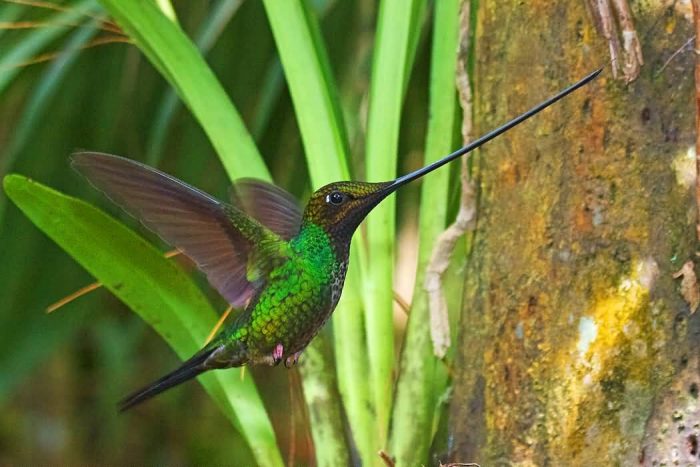
Joseph C Boone /CC BY-SA 3.0 | Sword Billed Hummingbird
2. American White Pelican
The American white pelican is a large aquatic soaring bird and it is native to North America. These Birds are found in brackish and freshwater lakes of inland North America. They reach lengths between 50 and 70 inches. Body weight can range between 3.5 and 13.6 kg.
This bird bill is huge and flat on the top with a large throat sac below. In the breeding season, there is a laterally flattened “horn” on the upper bill. American White Pelican eats mostly fishes. Each bird eats more than 4 pounds of food in a day.
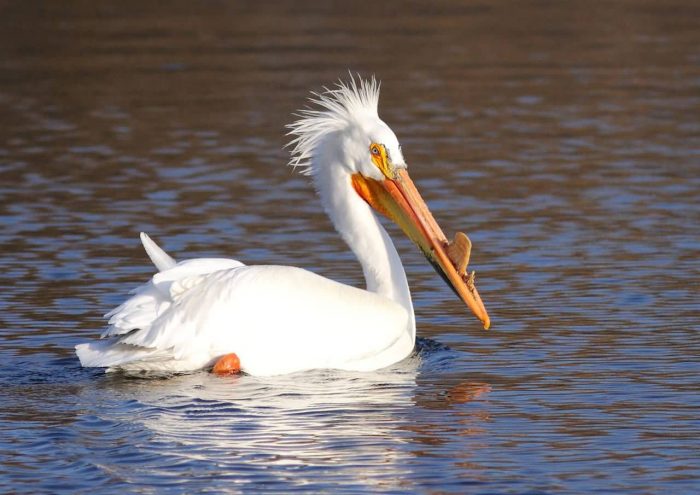
Enayetur Raheem /CC BY-SA 3.0 | American White Pelican
3. Roseate Spoonbill
The roseate spoonbill is a wading bird of the ibis and spoonbill family. It is native to South America and mostly east of the Andes. The roseate spoonbill is 71–86 cm long with a 120–133 cm wingspan. They are in pink corol and their bill is grey and spoon-shaped. THis spoon-shaped bill allows it to sift easily through mud. It feeds on crustaceans, aquatic insects, frogs, newts etc.
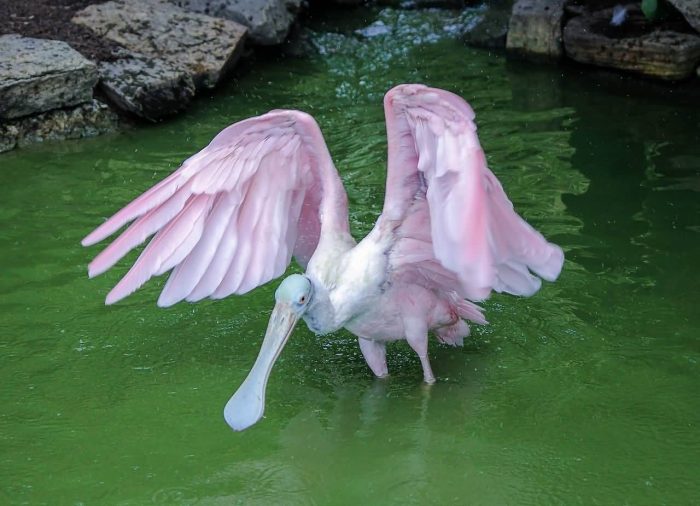
JamesDeMers /Public Domain | Roseate Spoonbill
4. Rhinoceros Hornbill
The rhinoceros hornbill is one of the largest hornbills. The adults are approximately in the size of a swan, 91–122 cm long and weighing 2–3 kg. It can live for up to 90 years. It is found in lowland and montane, tropical and subtropical climates. T
he rhinoceros hornbill is the state bird of the Malaysian state of Sarawak and the country’s National Bird. This bird has a mainly white beak and casque. The tip of the casque curves markedly upward. The bird has white underparts, especially to the tail.
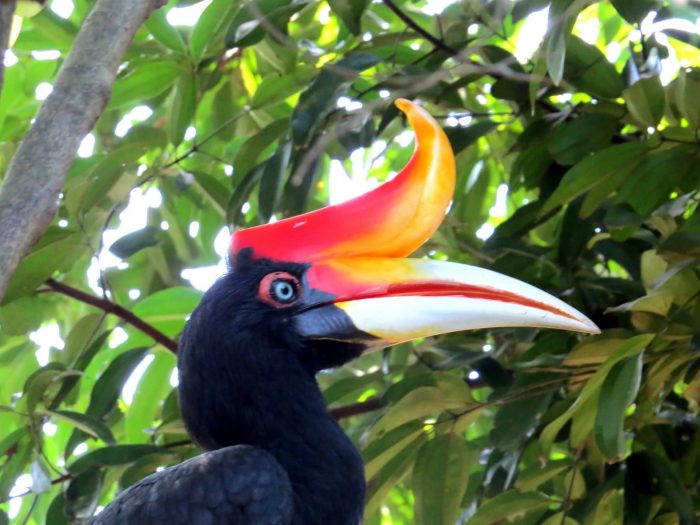
David Berkowitz /CC BY 2.0 | Rhinoceros Hornbill
5. Atlantic Puffins
The Atlantic puffin is a species of seabird in the auk family. It is the only puffin native to the Atlantic Ocean. It is also known as the common puffin. The largest colony is on Iceland where 60% of the world’s Atlantic puffins nest. The Atlantic puffin breeds in Iceland, Norway, Greenland, Newfoundland and many North Atlantic islands.
The Atlantic Puffins beak is very distinctive. From the side the beak is broad and triangular but viewed from above it is narrow. The half nearest the tip is orange-red and the half nearest to the head is slate grey. The Atlantic puffin diet consists almost entirely of fish and also eats shrimps, other crustaceans, molluscs and polychaete worms.

Brian Gratwicke /CC BY 2.0 | Atlantic Puffin
6. Keel-Billed Toucan
The keel-billed toucan is a colorful Latin American member of the toucan family. It is the national bird of Belize. It is also known as sulfur-breasted toucan or rainbow-billed toucan. Including its bill, the keel-billed toucan ranges in length from around 42 to 55 cm.
Their large and colorful bill averages around 12–15 cm about one-third of its length. The Bill is large and heavy and it is mainly green with a red tip and orange sides. The diet of this bird is mostly of a wide range of fruit, but may also include insects, eggs, nestlings and lizards, as well as small birds.
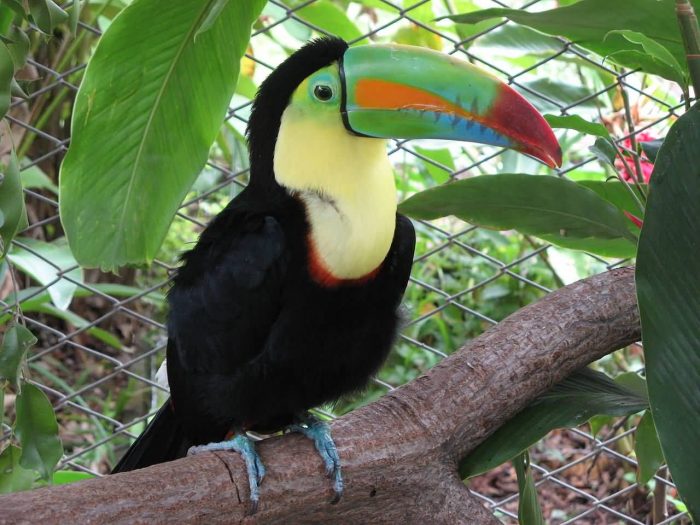
Donar Reiskoffer /CC BY 1.0 | Keel Billed Toucan Costa Rica
7. King Vulture
The king vulture is a large bird found in Central and South America. The king vulture has a very noticeable yellow fleshy caruncle on its beak. The king vulture has the strongest bill of the New World vultures. This bill has a hooked tip and a sharp cutting edge. Using its bill to tear, it makes the initial cut in a fresh carcass. The king vulture eats anything from cattle carcasses to beached fish and dead lizards.

Ettore Balocchi /CC BY 2.0 | King Vulture
8. Great White Pelican
The great white pelican also known as the eastern white pelican, rosy pelican or white pelican is a bird in the pelican family. It breeds from southeastern Europe through Asia and in Africa in swamps and shallow lakes. Great White Pelican has long and broad bill. The mostly white bird has contrasting black flight feathers on the wings. The diet of the great white pelican consists mainly of fish.
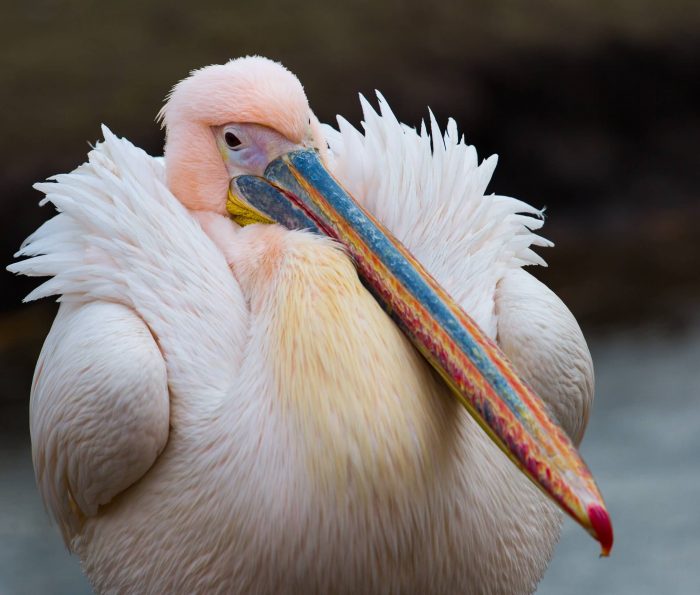
Lennart Tange /CC BY 2.0 | Great White Pelican
9. Black Skimmer
The black skimmer breeds in North and South America. The black skimmer is the largest of the three skimmer species. It measures 40–50 cm long with a 107–127 cm wingspan. The basal half of the bill is red, the rest mainly black and the lower mandible is much-elongated. Skimmers have a light graceful flight with steady beats of their long wings. They feeds on fish, insects, crustaceans and molluscs.
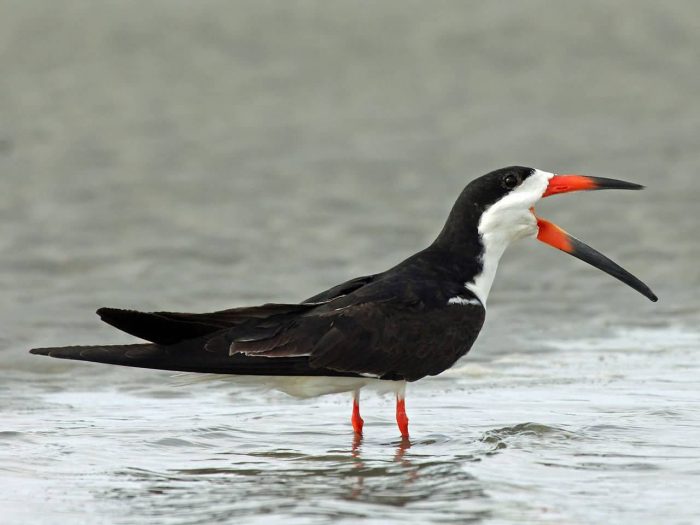
DickDaniels /CC BY-SA 1.0 | Black Skimmer
10. Black-necked Stork
The black-necked stork is a tall long-necked bird in the stork family. It is a resident species across South and Southeast Asia with a disjunct population in Australia. Adult birds of both sexes have a heavy bill and are patterned in white and glossy blacks. The Black-necked Stork feeds on fish, small crustaceans and amphibians. They have also been known to prey on the eggs and hatchlings of turtles.

Lip Kee /CC BY-SA 2.0 | Black Necked Stork

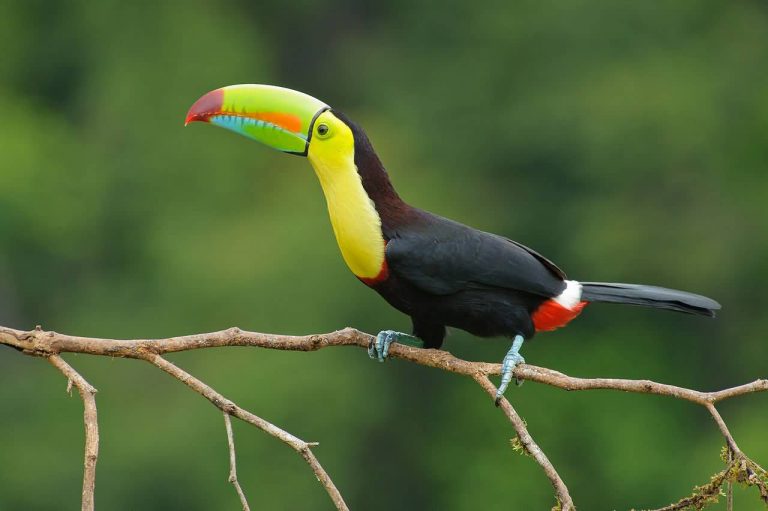

Connect with us